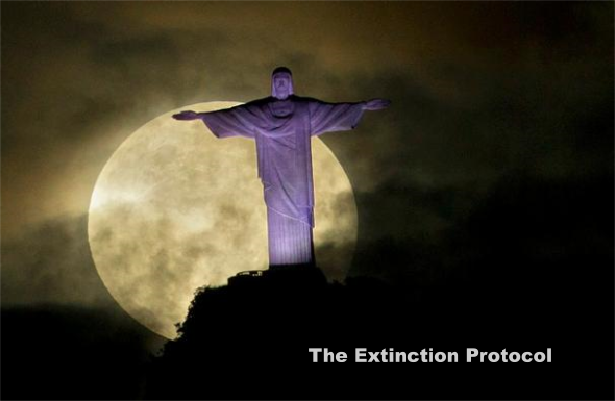Omen: floods, revolutions, wars, volcanoes, earthquakes, rattled markets- there’s a bad moon on the rise | The Extinction Protocol: 2012 and beyond

June 21, 2012 – SPACE - The largest full moon of 2013, a so-called “supermoon,” will light up the night sky this weekend, but there’s more to this lunar delight than meets the eye. On Sunday, June 23, at 7 a.m. EDT, the moon will arrive at perigee — the point in its orbit its orbit bringing it closest to Earth), a distance of 221,824 miles. Now the moon typically reaches perigee once each month (and on some occasions twice), with their respective distances to Earth varying by 3 percent. But Sunday’s lunar perigee will be the moon’s closest to Earth of 2013. And 32 minutes later, the moon will officially turn full. The close timing of the moon’s perigee and its full phase are what will bring about the biggest full moon of the year, a celestial event popularly defined by some as a “supermoon.” While the exact time of the full moon theoretically lasts just a moment, that moment is imperceptible to casual observers. The moon will appear full a couple of days before and after the actual full moo most will speak of seeing the nearly full moon as “full”: the shaded strip is so narrow, and changing in apparent width so slowly, that it is hard for the naked eye to tell in a casual glance whether it’s present or on which side it is. During Sunday’s supermoon, the moon will appear about 12.2 percent larger than it will look on Jan. 16, 2014, when it will be farthest from the Earth during its apogee.
In addition, the near coincidence of Sunday’s full moon with perigee will result in a dramatically large range of high and low ocean tides. The highest tides will not, however, coincide with the perigee moon but will actually lag by up to a couple of days depending on the specific coastal location. When the perigee moon lies close to the horizon it can appear absolutely enormous. That is when the famous “moon illusion” combines with reality to produce a truly stunning view. For reasons not fully understood by astronomers or psychologists, a low-hanging moon looks incredibly large when hovering near to trees, buildings and other foreground objects. The fact that the moon will be much closer than usual this weekend will only serve to amplify this strange effect. So a perigee moon, either rising in the east at sunset or dropping down in the west at sunrise might seem to make the moon appear so close that it almost appears that you could touch it. –Yahoo
Bad Moon Rising? John Fogerty reportedly wrote “Bad Moon Rising” in 1969 after watching The Devil and Daniel Webster. Inspired by a scene in the film involving a hurricane, Fogerty claims the song is about “the apocalypse that was going to be visited upon us.” –Wikipedia
No comments:
Post a Comment